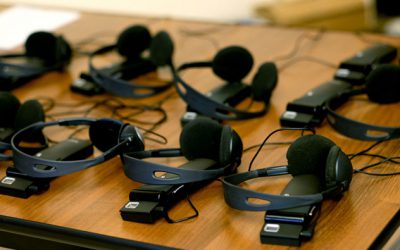In an increasingly interconnected world, effective communication is key, especially when language barriers arise. Whether you’re in the corporate boardroom, a healthcare setting, or a legal proceeding, working with an Professional Language Interpreter can be a game-changer. However, it requires finesse to make this collaboration truly effective.
In this post, we’ll explore 10 tips to ensure you get the most out of working with an interpreter, fostering understanding and bridging linguistic gaps.
Preparation is Power:
Before your meeting or event, take the time to prepare materials for the interpreter. Provide them with any relevant documents, glossaries, or industry-specific terminology that may come up. A well-prepared interpreter is an empowered interpreter, ready to tackle the nuances of your conversation.
Build a Bridge of Trust:
Establishing a rapport with your interpreter is crucial. Make them feel like an integral part of the team. Share information about the context, goals, and any cultural nuances that may come into play. A trusting relationship will enhance communication and foster a smoother collaboration.
Speak Clearly and Concisely:
When communicating through an interpreter, remember to speak clearly and at a moderate pace. Avoid jargon, acronyms, or overly complex sentences. By doing so, you’re not just aiding the interpreter but also ensuring that your message remains intact and easily understandable.
Pause for Interpretation:
Allow time for the interpreter to convey your message accurately. Speak in short segments, pausing to give them the opportunity to interpret without feeling rushed. This ensures that the conversation flows naturally and allows for a more seamless exchange of ideas.
Cultural Sensitivity Matters:
Understanding the cultural context is as important as linguistic proficiency. Be mindful of cultural nuances that may impact communication. For instance, certain gestures or phrases may have different meanings in different cultures. A culturally sensitive approach will enhance the overall effectiveness of your communication.
Choose the Right Interpreter:
Selecting the right interpreter for the job is crucial. Consider their expertise in the subject matter, familiarity with the cultural context, and linguistic proficiency. A well-matched interpreter will not only accurately convey your message but also add value by bridging cultural gaps.
Encourage Clarification:
Create an environment where questions and clarifications are encouraged. If the interpreter is uncertain about a term or concept, encourage them to seek clarification rather than making assumptions. This ensures accuracy and prevents misunderstandings.
Use Visual Aids Wisely:
In situations where visual aids are involved, ensure they complement the interpretation. Share materials in advance with the interpreter, allowing them to familiarize themselves with the content. This collaboration ensures that both verbal and visual elements align seamlessly.
Feedback is a Two-Way Street:
After the interpretation, seek feedback from both parties involved. This two-way communication allows for continuous improvement. Encourage the interpreter to share insights about the process, and provide constructive feedback about their performance to foster a collaborative learning environment.
Continuous Professional Development:
Interpreters, like any professionals, benefit from ongoing development. Stay updated on industry trends, attend workshops, and engage in professional development opportunities. This commitment to growth enhances an interpreter’s ability to navigate diverse scenarios effectively.
Working with an interpreter is not just about breaking language barriers; it’s about fostering understanding and collaboration. By implementing these 10 tips, you can create an environment where effective communication becomes the norm.
Embrace the diversity that interpreters bring to the table, and watch as your interactions become more meaningful, irrespective of the languages spoken. Remember, the true power of communication lies in the ability to connect, and interpreters are your partners in building those bridges.





0 Comments